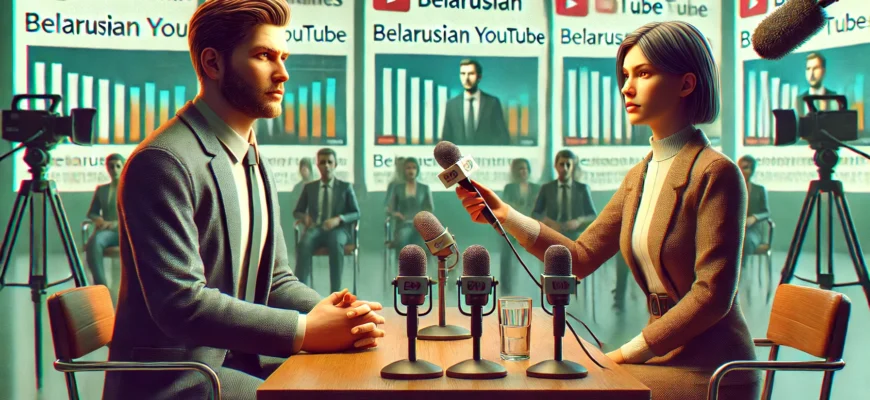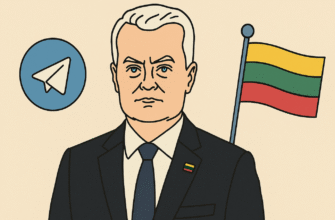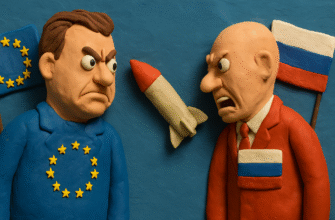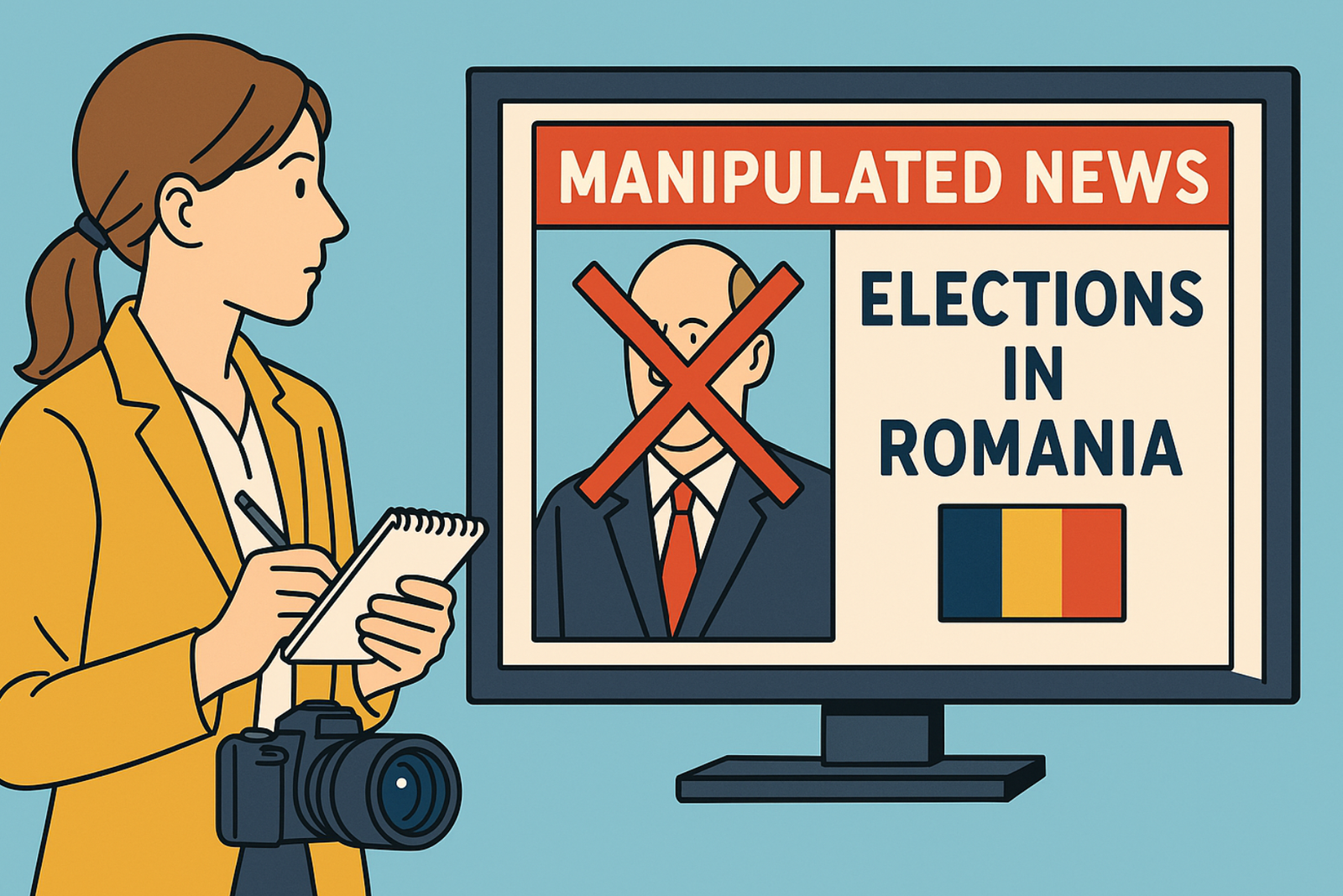On October 14, 2024, an interview with Roman Protasevich was published on the YouTube channel “Ostorozhno: Sobchak” (3.83 million subscribers). This interview attracted attention not only for its manipulative and disinformative narratives but also because it quickly entered YouTube Trending in Belarus. Let’s analyze this interview as part of a communication campaign.
Methodology
The main product for collecting YouTube Trending data was the Oxylabs Web Scraper API, provided as part of Project 4β. Data from the October dataset, collected by Information Policy Blog, was obtained using YouTube API v3. Additionally, two LLMs—AssemblyAI and OpenAI—were used through the API for narrative analysis and transcription. The prototype was tested on July data related to election campaigns.
Let’s first recall who Roman Protasevich is, known as “Lukashenko’s hostage.” He was the editor of the Belarusian outlet NEXTA, which covered the protests following the 2020 Belarus elections. In spring 2021, a Ryanair flight from Athens to Vilnius, carrying Protasevich and Sofia Sapega, was forcibly landed in Minsk, and the journalist was sent to prison. Now Roman is free, works at a factory, and praises Lukashenko.
Ksenia Sobchak’s interview with Roman Protasevich, titled “PROTASEVICH: How to Stop Being Afraid and Love Lukashenko. About NEXTA, Torture, and the KGB (featuring Azaryonka)” stayed in YouTube Trending in Belarus for 21 days.
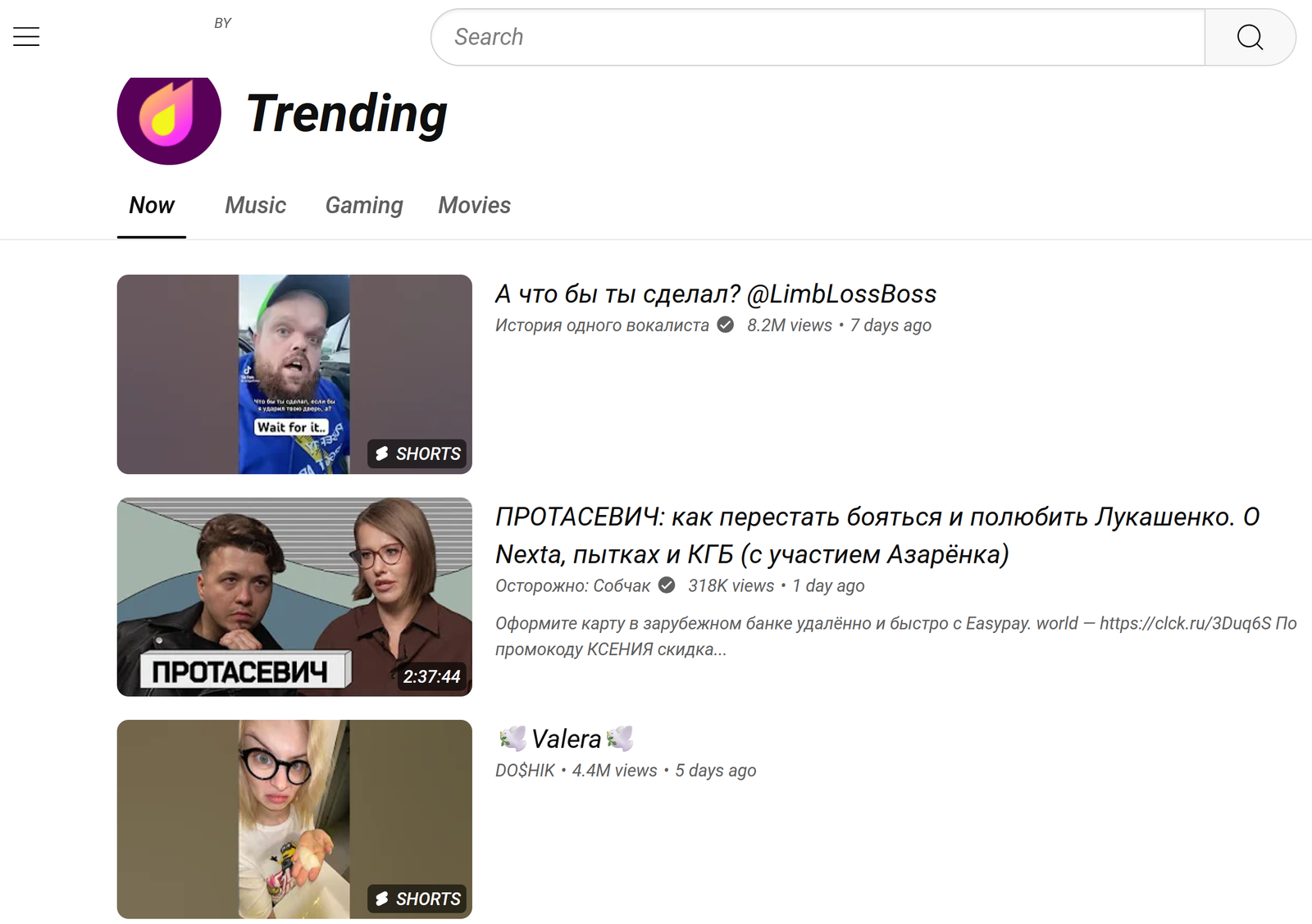
On October 16, TV Rain released an analysis of the interview with the title: “Sobchak with Lukashenko’s Hostage. What’s Wrong with Protasevich’s Interview?” This material also entered YouTube Trending in Belarus but stayed there for a shorter time (15 days).
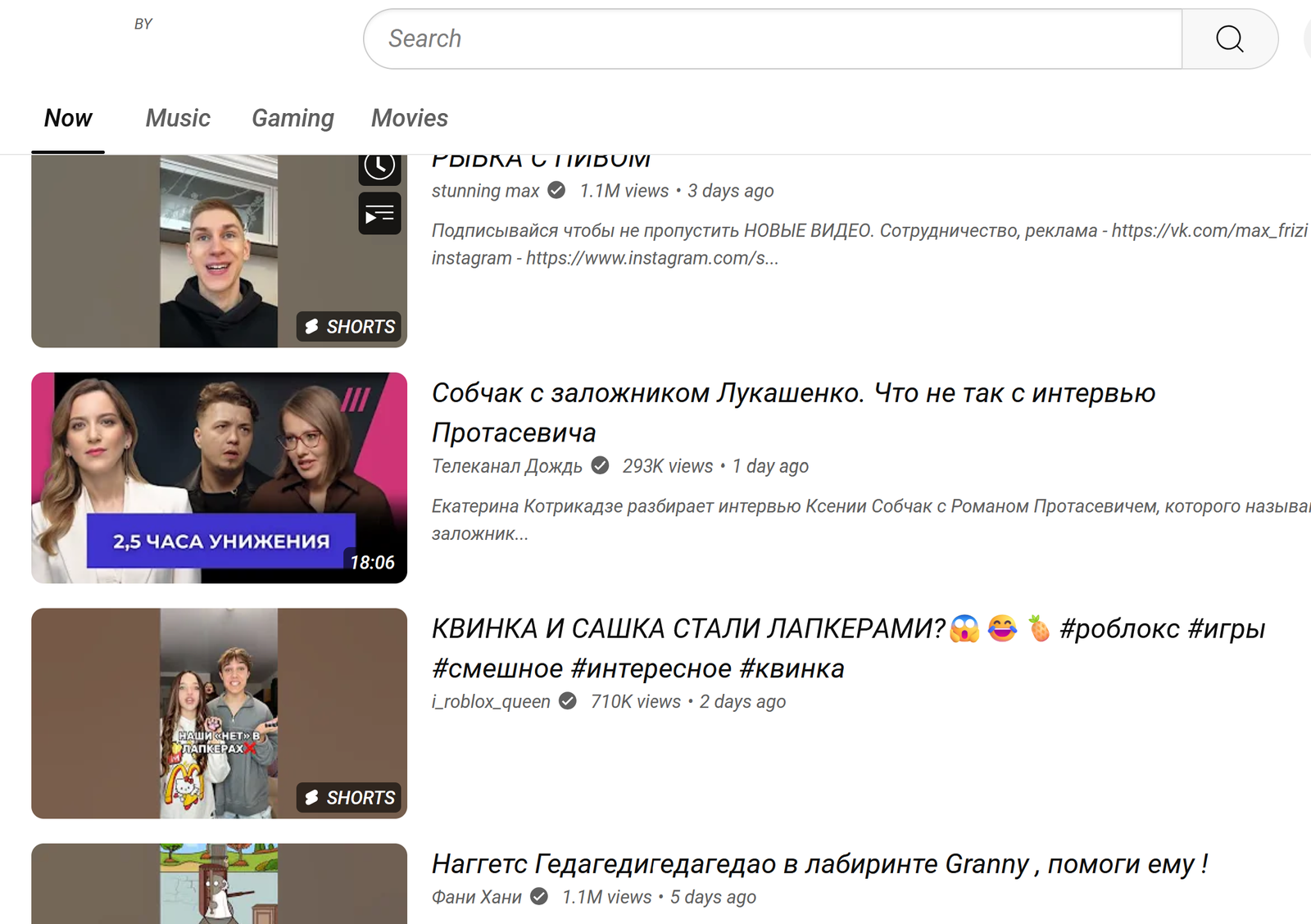
The growth in views while being in YouTube Trending in Belarus:
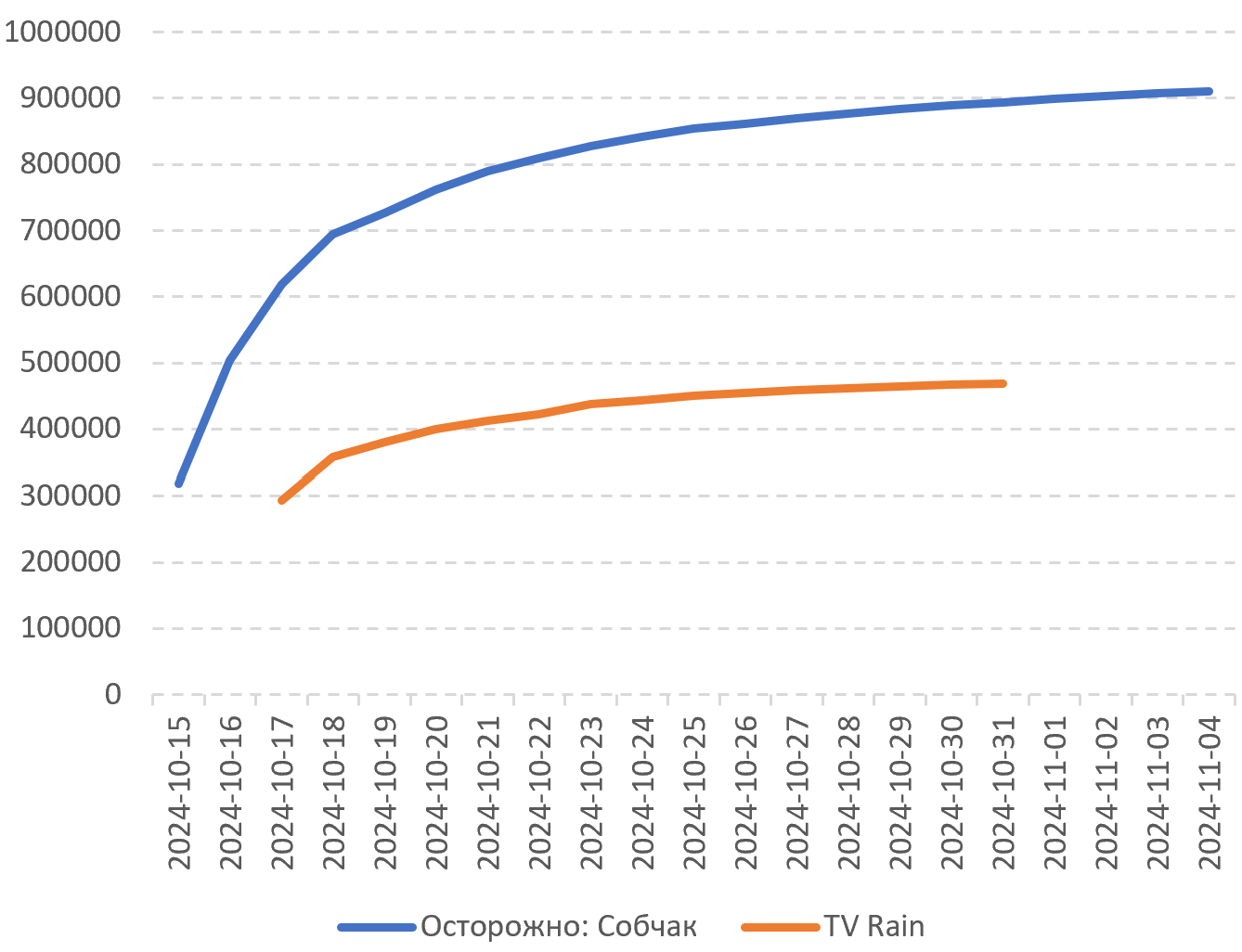
It can be assumed that the “saturation point,” that is, the moment when the number of views began to grow insignificantly, occurred two weeks later (2024-10-29) after entering the trends. The growth in views of the video on the “Ostorozhno: Sobchak” channel was exponential.
Let’s take a look at some socio-demographic characteristics of these two YouTube channels that are working with the Belarusian political agenda and successfully advancing in the Belarusian information space.
The “Ostorozhno: Sobchak” channel is closely linked with major channels on other key platforms:
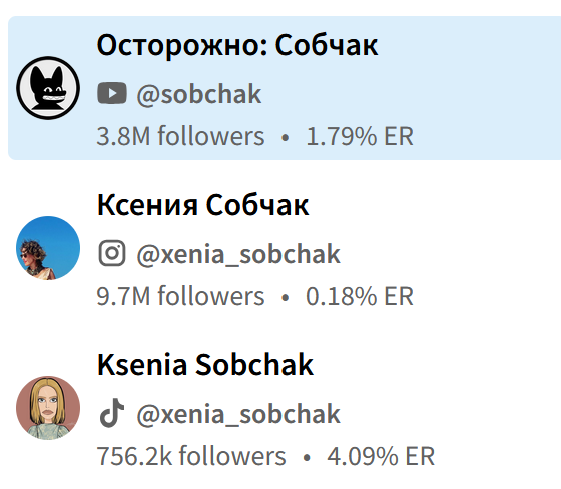
Basic socio-demographic characteristics:
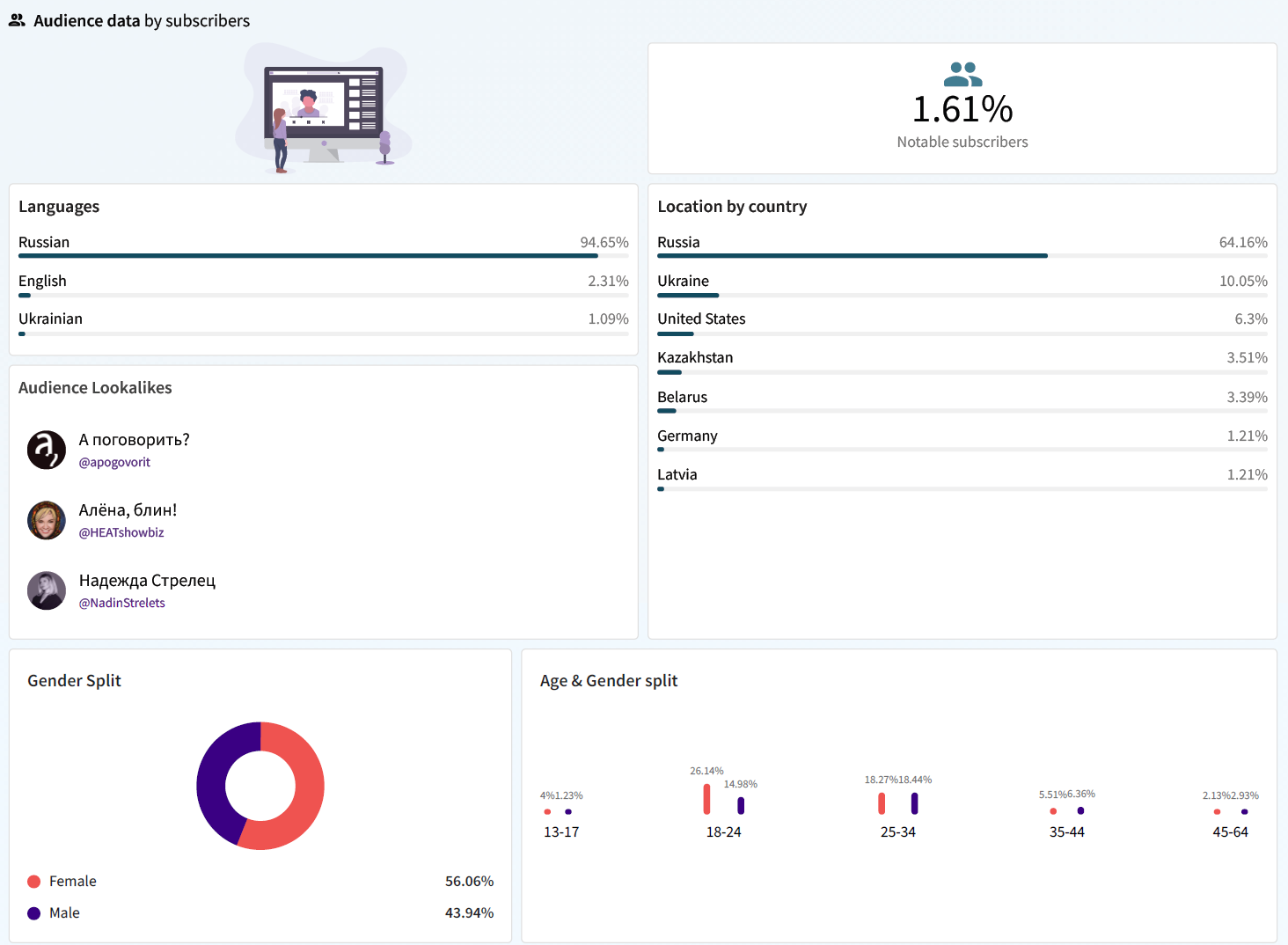
The share of subscribers from Belarus—3.39%—seems insignificant, but given the total number of subscribers—3.83 million—130,000 Belarusian subscribers is quite significant.
Let’s also add a seriously underestimated metric in Belarus: the number of notable subscribers:
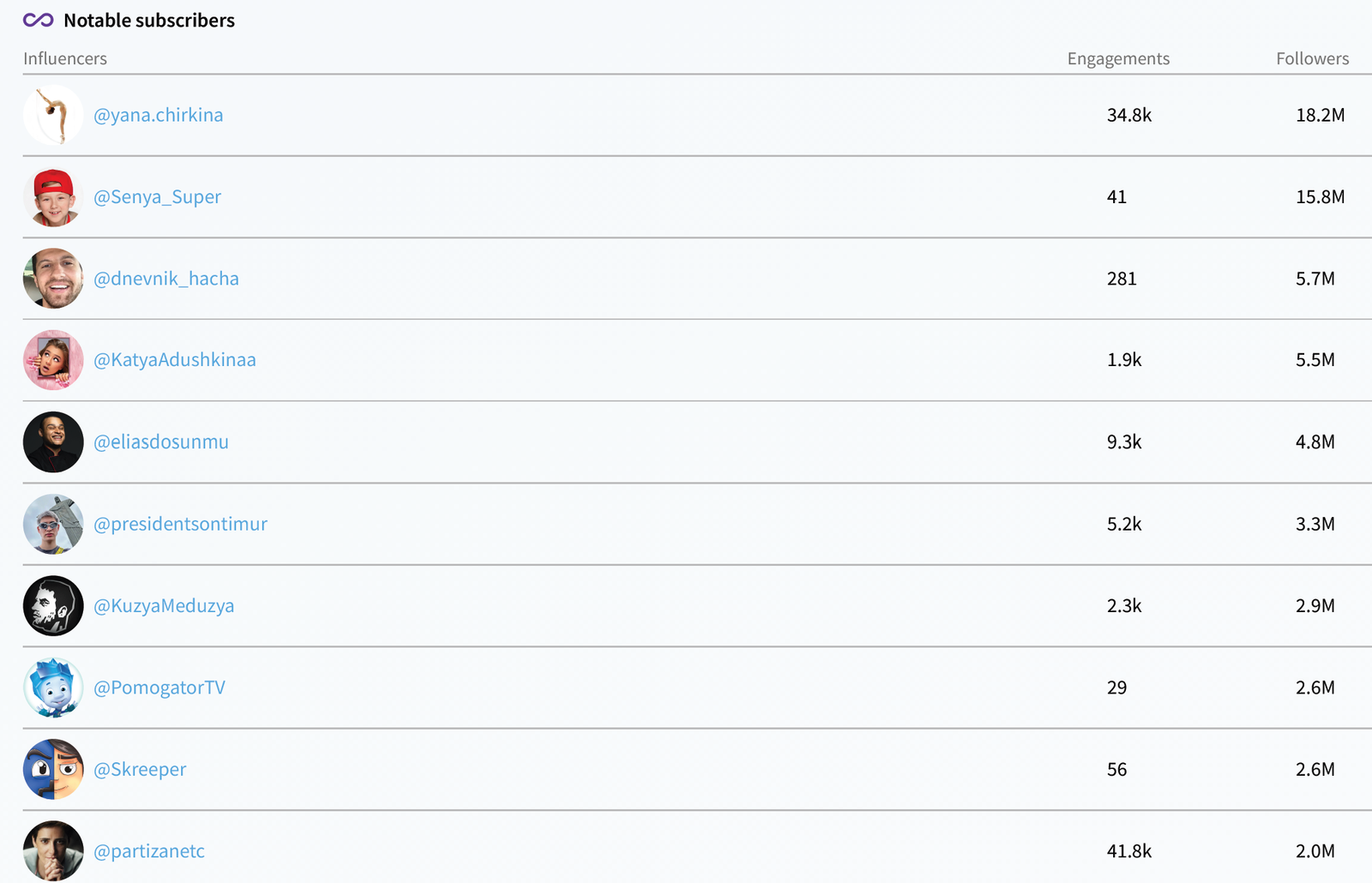
As can be seen, five influencers have more subscribers than the “Ostorozhno: Sobchak” channel itself.
TV Rain has more subscribers on YouTube. On other platforms, it lags behind “Ostorozhno: Sobchak”:
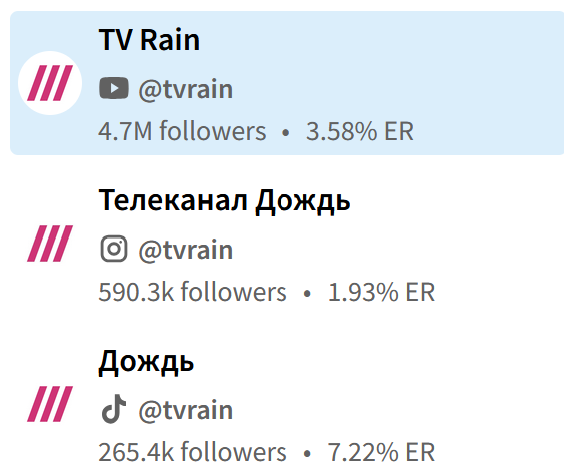
Basic socio-demographic characteristics:
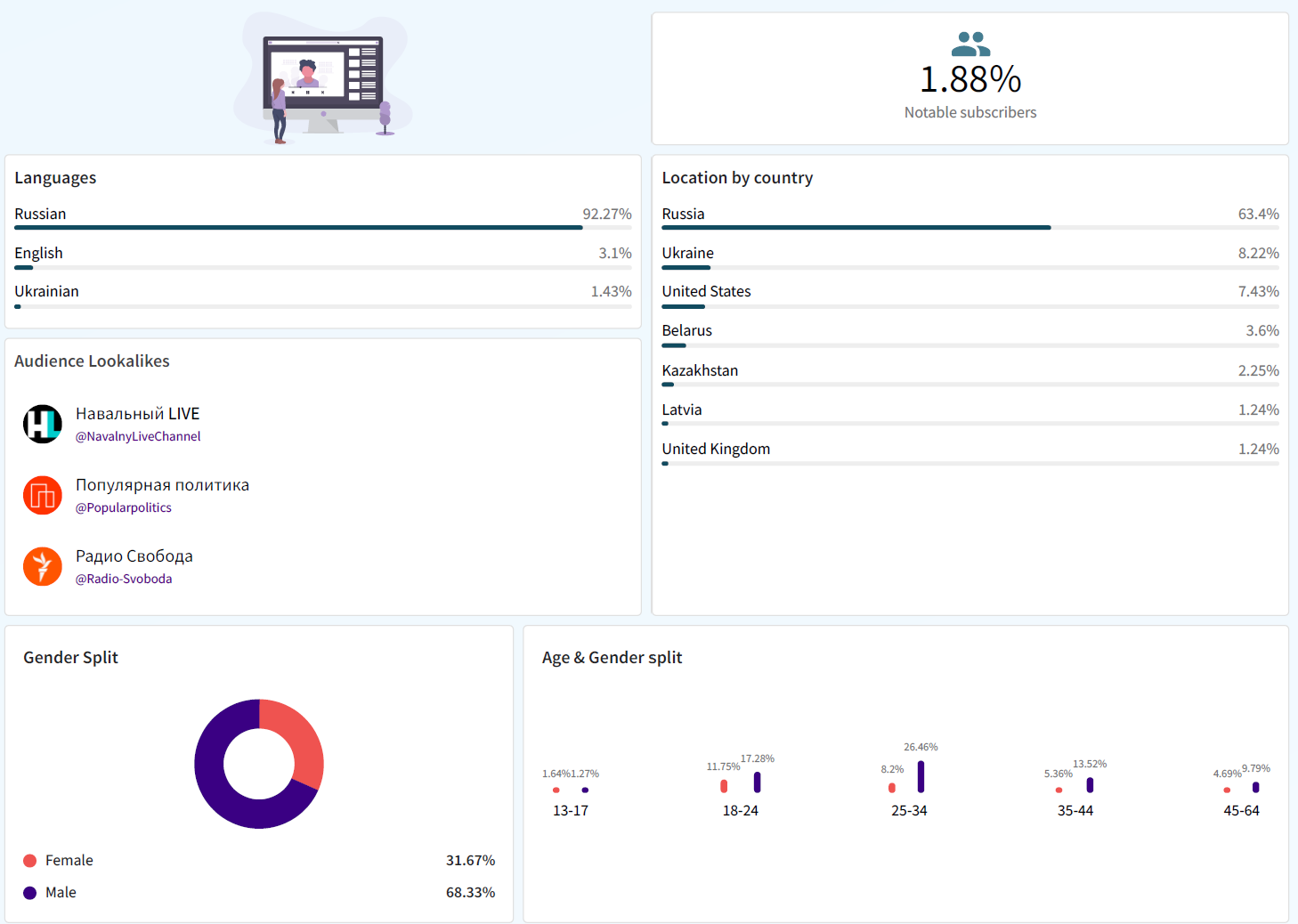
Unlike “Ostorozhno: Sobchak,” most of TV Rain’s subscribers are men. The share of subscribers from Belarus is 3.6%. Out of 4.7 million, this is almost 170,000 subscribers.
Let’s also look at the key influencers who are subscribed to the channel:
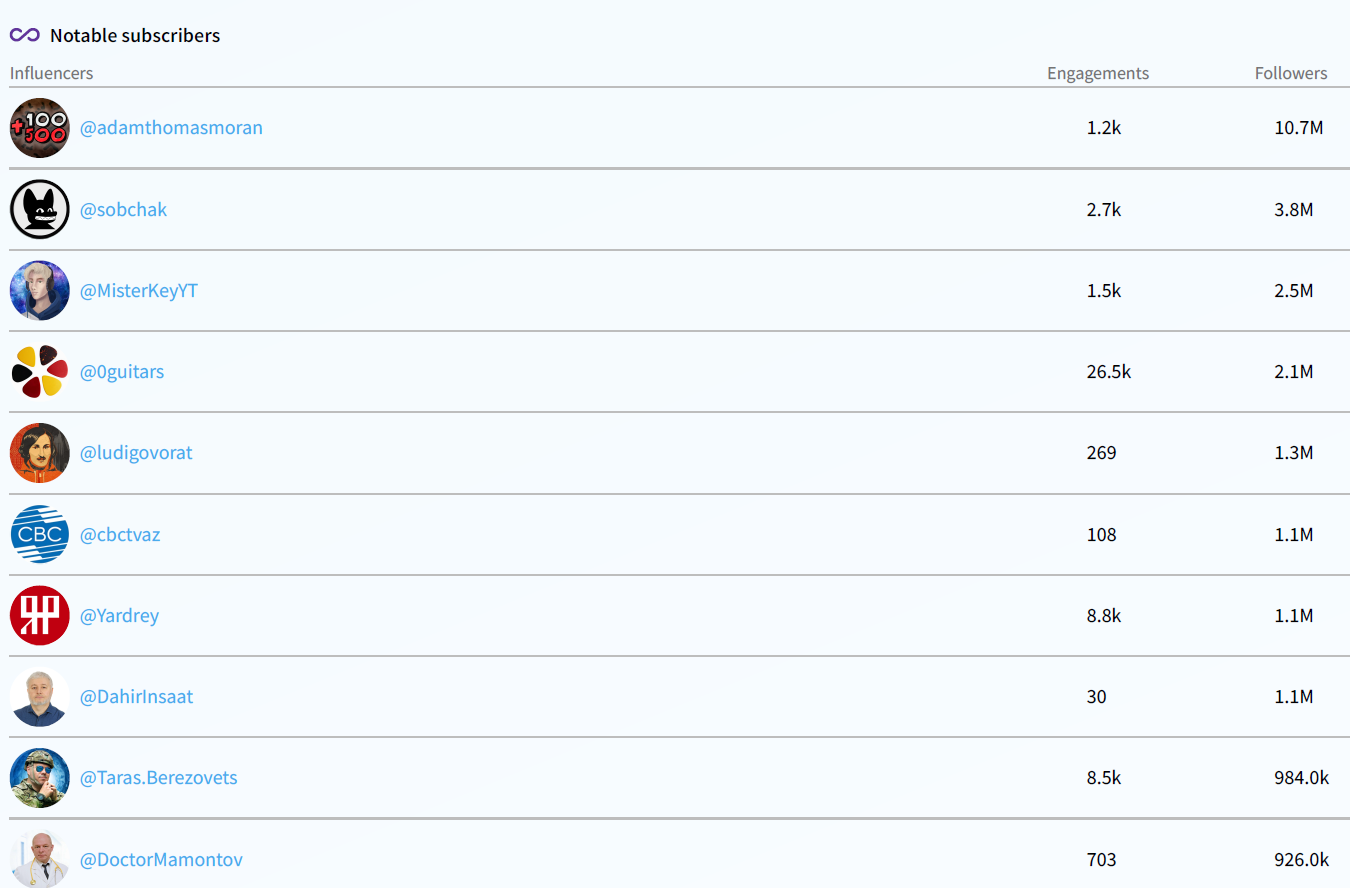
Interestingly, “Ostorozhno: Sobchak” ranks second among influential subscribers.
Analysis of Sobchak’s Interview with Protasevich
Watching and analyzing an interview that lasts 2.5 hours is quite a challenging task technologically. First, let’s create a “word cloud” based on the words used by the speakers:
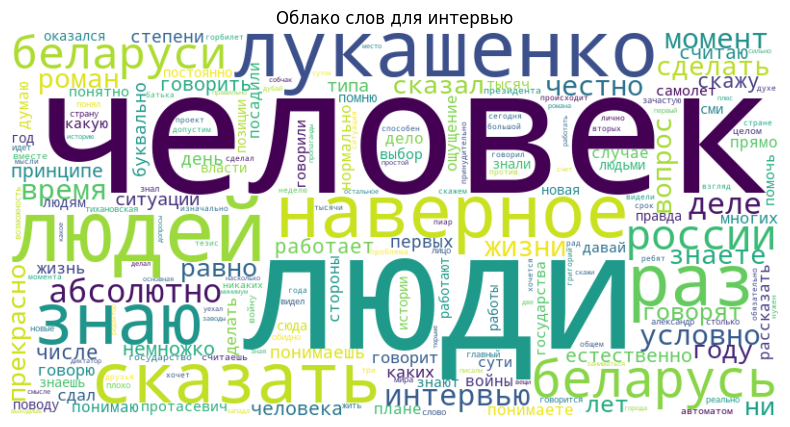
Frequency analysis confirms that the surname of the Belarusian regime leader over the last thirty years is mentioned frequently:
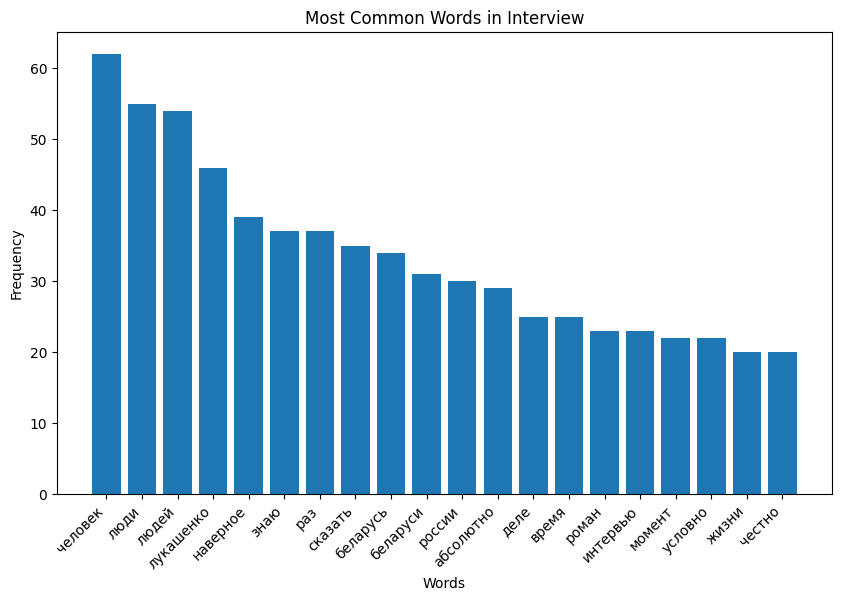
Some relationships between mentions in the interview were also discovered:
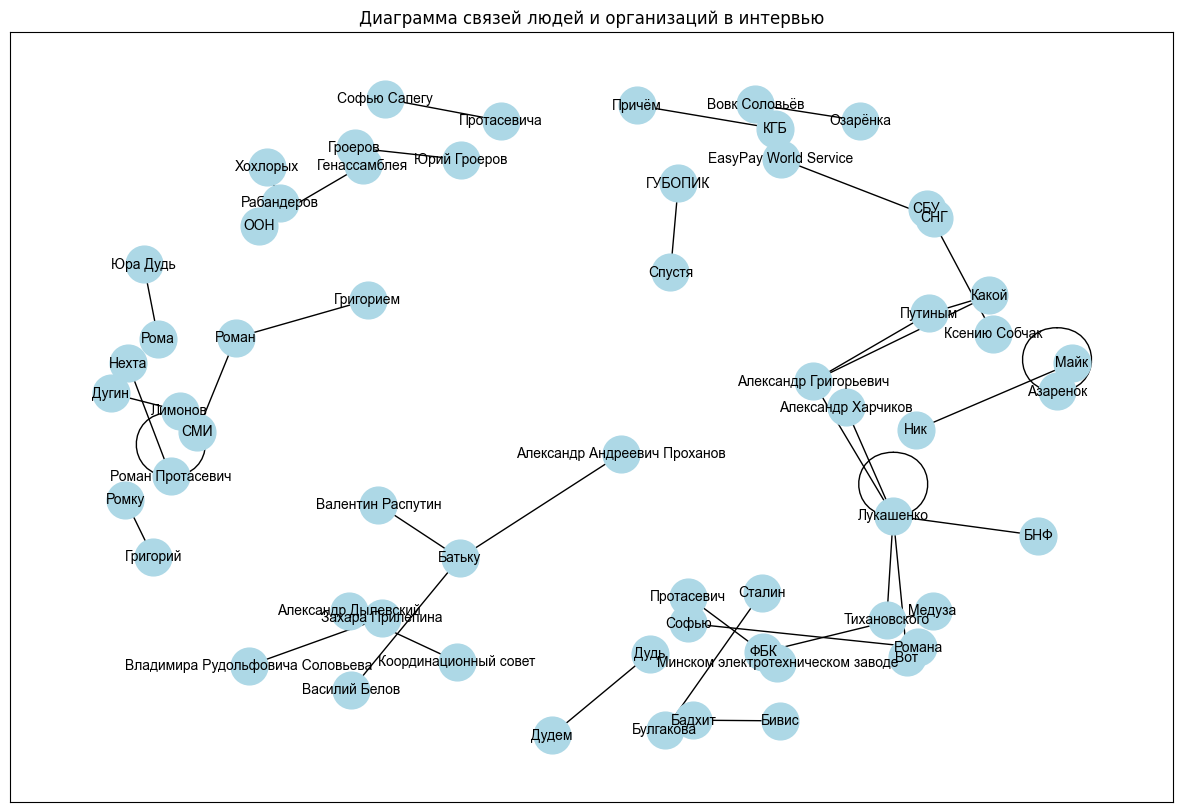
In this analysis, we will focus on the content of the interview, fact-checking statements, and identifying key manipulative narratives.
- Portrayal of the Opposition and Its Leaders
In the interview, Roman Protasevich repeatedly describes the opposition in a negative light, using derogatory characteristics and emphasizing their weakness. For example, Sviatlana Tsikhanouskaya is described as a “technical candidate” who lacks the necessary skills to participate fully in political life. Protasevich also states that “she wouldn’t be able to withstand a debate with Lukashenko.” These claims are intended to discredit the opposition and create the impression of a lack of viable alternatives to the current president.
- The Role of Belarusian Security Structures
Security structures such as the KGB of Belarus are portrayed exclusively in a positive light in the interview. Protasevich says that KGB officers “treated me absolutely humanely, without hatred,” which contrasts with numerous reports by human rights organizations about human rights violations in Belarus. Such a portrayal of the KGB aims to create a positive image of state security structures and reduce criticism of them.
- Narratives of External Threat and Stability
The interview actively uses narratives of external threat and the need to protect against interference from Western countries. Protasevich claims that Belarus “avoided war thanks to Lukashenko,” emphasizing the president’s wisdom and foresight. This approach helps create the image of Lukashenko as the guarantor of security and stability, even though the real political processes in the region are much more complex and multifaceted.
- Demonstration of “Repentance” and Support for the Government
Protasevich is portrayed as someone who “realized his mistakes” and now supports the current government. This creates a narrative of forgiveness and the possibility of return for those willing to cooperate with the authorities. It is important to note that Protasevich’s statements about his support for Lukashenko raise doubts about their voluntariness, considering the context of his detention and possible pressure from the security services.
- Discrediting Independent Media
In the interview, Protasevich claims that opposition media “just reprint information from state sources, adding emotional coloring.” This statement is aimed at discrediting independent media and creating the impression of their incompetence and lack of professionalism. Such distortion of reality serves to reduce trust in alternative sources of information and strengthen the position of state media.
- Fact-Checking Key Statements
- “Lukashenko saved Belarus from war”: This statement is an exaggeration, ignoring the complex political circumstances and the influence of international diplomacy. The real processes in the region involve the interaction of multiple parties, and attributing all the credit to one leader is a distortion of facts.
- “The KGB treated me humanely”: Such statements contradict numerous reports of torture and ill-treatment of detainees in Belarus, as documented by human rights organizations and international observers. This raises doubts about the objectivity of Protasevich’s descriptions.
- “Opposition media reprint state sources”: Independent media in Belarus are often subject to censorship and persecution, complicating their work. However, they strive to provide an alternative viewpoint and conduct their own investigations. Protasevich’s statement is an attempt to discredit and ignore their contribution to covering events.
- Manipulations and Their Influence on Public Opinion
Roman Protasevich’s interview with Ksenia Sobchak represents an example of using manipulative techniques and disinformation narratives to shape public opinion in favor of the current government. It employs derogatory descriptions of the opposition, positive portrayals of security structures, and emphasizes external threats to justify repressive policies. Protasevich’s statements raise doubts about their voluntariness and objectivity, given his situation and the possible pressure exerted by the authorities.
This approach aims to strengthen Lukashenko’s position, create the image of the country’s sole protector, and discredit the opposition and independent media. This interview has become a significant part of the information campaign aimed at mobilizing government supporters and reducing criticism of the authorities.
Information Support
Now, let us take a broader look at the entire campaign beyond just the interview of Roman Protasevich with Ksenia Sobchak. A total of 33 videos discussing and analyzing the interview were found.
These videos were posted on 18 channels and gathered 1.023 million views.
Distribution of videos by day of the month:
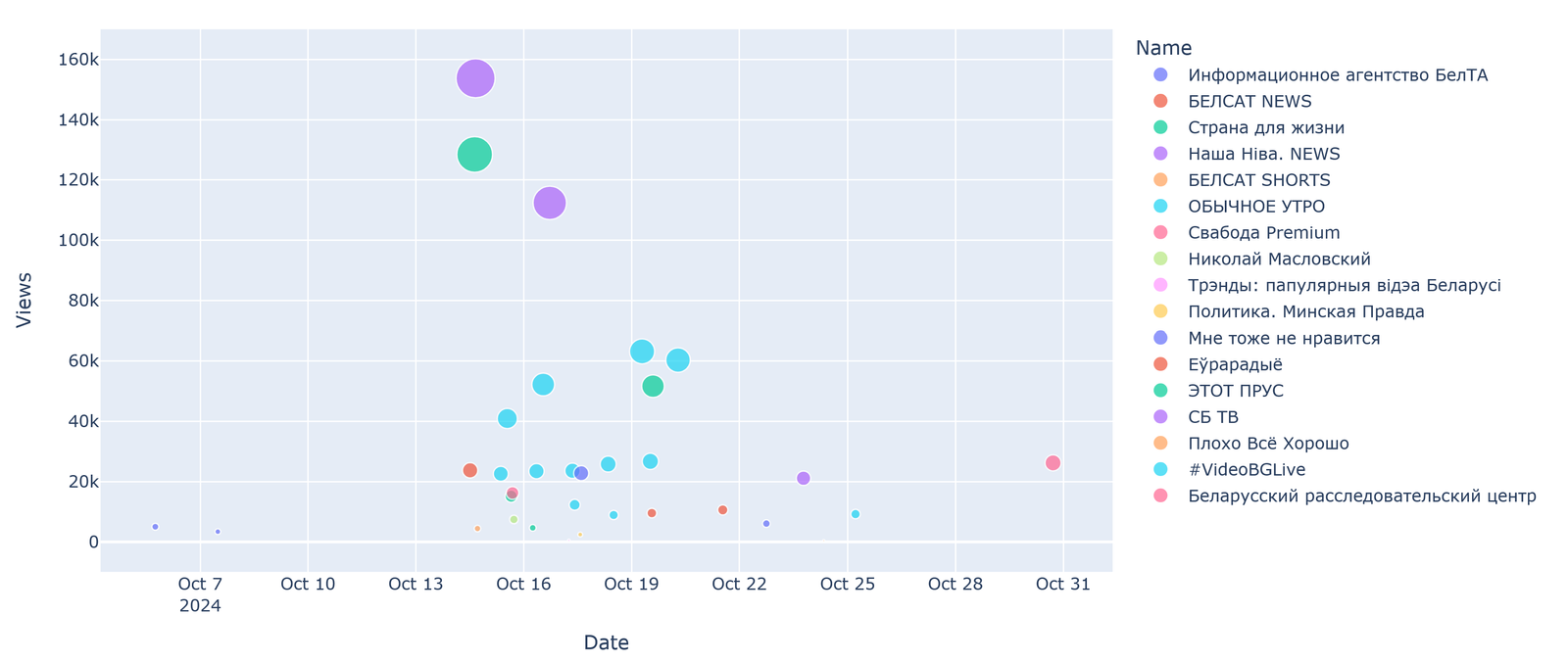
The interactive chart is available here.
A spoiler was released by the YouTube channel of the Belarusian news agency BelTA:
– In 2020, Roman Protasevich rocked the regime. Now, is he ready to rock the other side? – You know, I’ve had enough rocking in my life. It’s fundamentally ambiguous. I’ve mentioned it many times, and that’s exactly what I meant. – In case the other side starts unfriendly actions against us, which happens continuously. – Listen, I’ve already pointed this out, and I’ll say it again—undoubtedly, if my country is attacked, I, as a true patriot of Belarus, will defend the country in any direction needed.
As a small example of interconnected media channels, here is the growth in mentions of “Protasevich” in Belarusian Telegram channels and public chats:

The chart shows a typical PR campaign, where interest (in this case, the number of views) fades away after three days. On October 14, there were 71 mentions and 692,000 views, and on October 15, there were 76 mentions and 342,000 views.
Which Telegram channels made the most posts mentioning “Protasevich”:
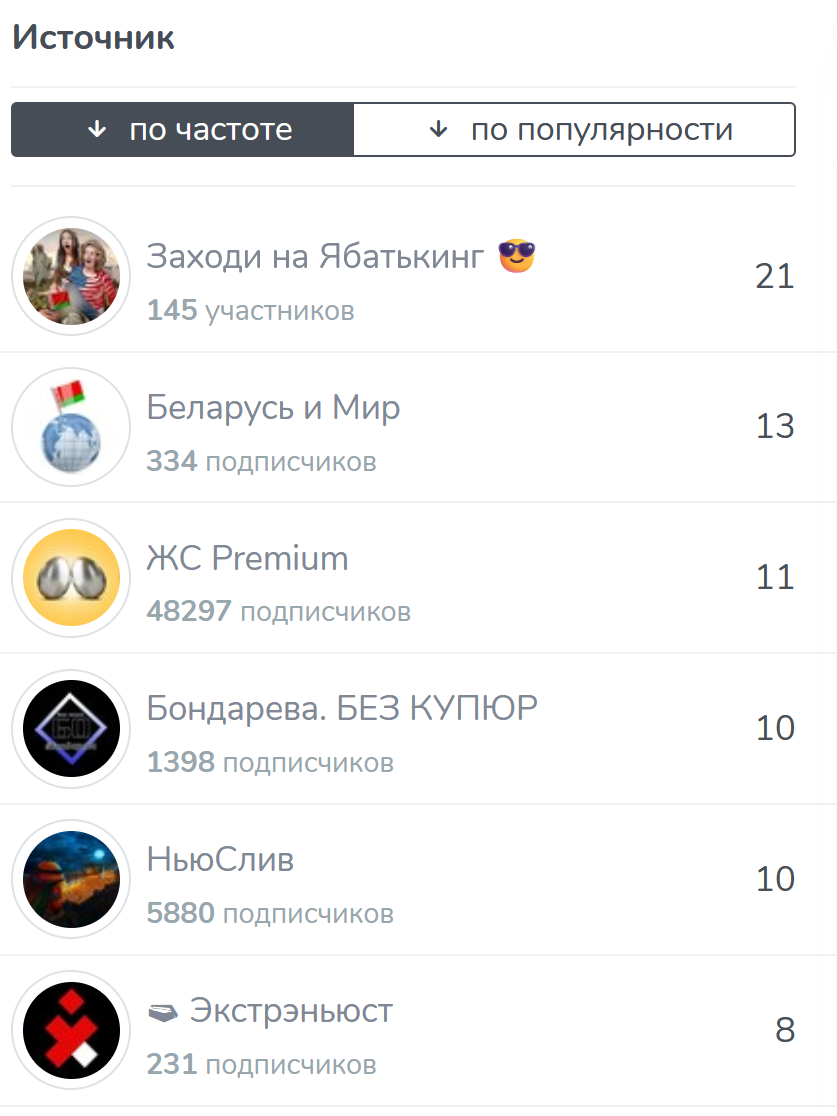
Almost all of them belong to toxic Belarusian Telegram channels, which can also be considered a certain type of informational support.
It is also important to understand why, despite the large number of Belarusian materials discussing and analyzing the interview, only the TV Rain video made it into YouTube Trends, which indicates its high popularity and effectiveness in reaching the Belarusian audience. Let’s consider why this happened:
- Critical Approach and Alternative Point of View. Unlike state media, TV Rain’s material provided an alternative interpretation of events and the interview, which attracted viewers tired of pro-government narratives. A critical analysis and questioning of official statements could attract an audience that seeks a more balanced and independent source of information.
- Video Content Format and Emotional Engagement. Video content is one of the most popular formats for consuming information, especially among young people and active urban populations. A critical video about a figure at the center of public attention (Protasevich) evoked an emotional reaction from viewers, ensuring high engagement and attention retention. The effect of emotional polarization may have also contributed to the video staying in the trends for a long time.
- Relevance of the Topic and High Significance for the Belarusian Audience. The interview’s topic concerned one of the most significant political issues of contemporary Belarusian society. Discussion of repressive measures, international reaction, and the future of the political regime resonated with broad segments of the population, especially those who are critical of the current government. The topic’s relevance and significance were key to the video’s wide reach.
- Response to Official Propaganda and Fact-Checking. TV Rain’s video became a kind of response to state media propaganda, offering viewers critical fact-checking and an alternative assessment of events. In conditions of limited access to independent sources in Belarus, this format became an important resource for citizens who strive to receive information from different perspectives.
- Reaction to the Impact of Protasevich’s and Sobchak’s Interview. The popularity of the original interview itself created an information field where TV Rain’s response became an important counter-propaganda step. As a result, TV Rain’s video received an additional popularity boost by criticizing an already well-known material and discussing hot topics at the top of public attention.
In combination, all these factors made TV Rain’s material an effective tool for reaching the Belarusian audience and providing an alternative view of Protasevich and Sobchak’s interview.
Strategic Communication
Roman Protasevich’s interview with Ksenia Sobchak, published on October 14, can be seen as part of the strategic preparation and support for Alexander Lukashenko’s presidential election campaign. Analyzing it from the perspective of strategic communications, several key aspects support this hypothesis.
- Timing of the Interview and Forming an Information Context Before the Election Announcement
The publication of the interview before the official election date announcement (October 23) indicates a well-thought-out strategy to form an informational background before the official start of the election campaign. This allowed key messages about stability and threats from the opposition to be embedded and create the necessary emotional background for the subsequent campaign.
The early release of the interview also helped state media prepare the audience for the upcoming aggressive rhetoric towards the opposition. The interview actively emphasizes Lukashenko’s image as a protector from external threats and a guarantor of stability, which becomes especially important in the context of the upcoming election campaign.
- Use of YouTube as a Tool to Reach the Youth Audience
The YouTube interview was aimed at capturing the attention of a youth audience that actively consumes video content. This shows that the communication strategy included attracting those segments of the population that might be less loyal to the current government and are more likely to support opposition views.
- The Interview as a Tool to Mitigate Reputational Risks
The interview’s release before the official campaign start can also be seen as an attempt to soften the repressive image of the Belarusian authorities and demonstrate their willingness to engage in dialogue with the opposition. Protasevich is portrayed as someone who “realized his mistakes” and now supports the government, which creates a narrative of forgiveness and the possibility of returning for those willing to cooperate. This could potentially weaken opposition sentiment among part of the audience.
Furthermore, the interview creates a “success story” for the regime, where state structures managed to “rehabilitate” an opposition member who now works for the country’s benefit. This strengthens the legitimacy of the authorities’ actions, showing their success in dealing with former opponents.
- Sustained Interest and High Reach
The prolonged presence of the interview in YouTube trends for three weeks indicates high interest from a wide audience. Three weeks in trends mean not only a high level of views but also active discussion, which helped create long-term information resonance.
The use of a popular platform like YouTube, especially among young people and urban residents, allowed the interview to have a significant impact. This was particularly important for influencing those who potentially do not support Lukashenko but are interested in media and current issues. The long-term effect of being in the trends helped maintain the audience’s attention on key messages and fix them in public consciousness.
- Support Through Reactions of Pro-Government and Opposition YouTube Channels
The interview’s presence in trends also stimulated active reactions from government supporters and pro-government YouTube channels, who used the interview to promote necessary narratives and reinforce the messages expressed in it. This amplified the information effect and created an “echo” in the media space, often used in election campaigns to strengthen trust in key messages.
Opposition YouTube channels also responded to Protasevich’s interview, which further increased the topic’s coverage in the media space. However, such critical reactions could unintentionally strengthen the effect of the interview, as it continued to remain on the agenda, and attention to Protasevich and his “repentance” did not subside. As a result, polarization intensified, which also played into Lukashenko’s hands, since, in a split opinion situation, the status quo—the incumbent government—often benefits.
- TV Rain Video in YouTube Trends
It is worth noting that TV Rain’s video was also in YouTube trends in Belarus for 15 days. This indicates significant interest in an alternative perspective on Protasevich and Sobchak’s interview. TV Rain’s video offered a critical analysis of the interview, highlighting manipulative aspects and possible pressure on Protasevich. The alternative presentation of information, in-depth analysis, and focus on contradictions drew interest from an audience seeking balance and an independent view of the situation.
- Overall Conclusion: Part of the Preparatory Phase of the Election Campaign
Roman Protasevich and Ksenia Sobchak’s interview can be viewed as an important part of the strategic preparation and warming up of public attention before the active phase of the election campaign. It contributed to consolidating key narratives in favor of Lukashenko, discrediting the opposition, and enhancing emotional mobilization around the figure of the incumbent president.
The use of various tools, including prolonged presence in trends, allowed for maximum audience reach and effectively prepared public opinion for the upcoming elections. The interview essentially served as the “prologue stage” of the election campaign, creating a favorable perception of the incumbent president and discrediting his opponents, which was especially important ahead of active electoral campaigning.
This publication was developed by a research team under the leadership of Mikhail Doroshevich, PhD.

